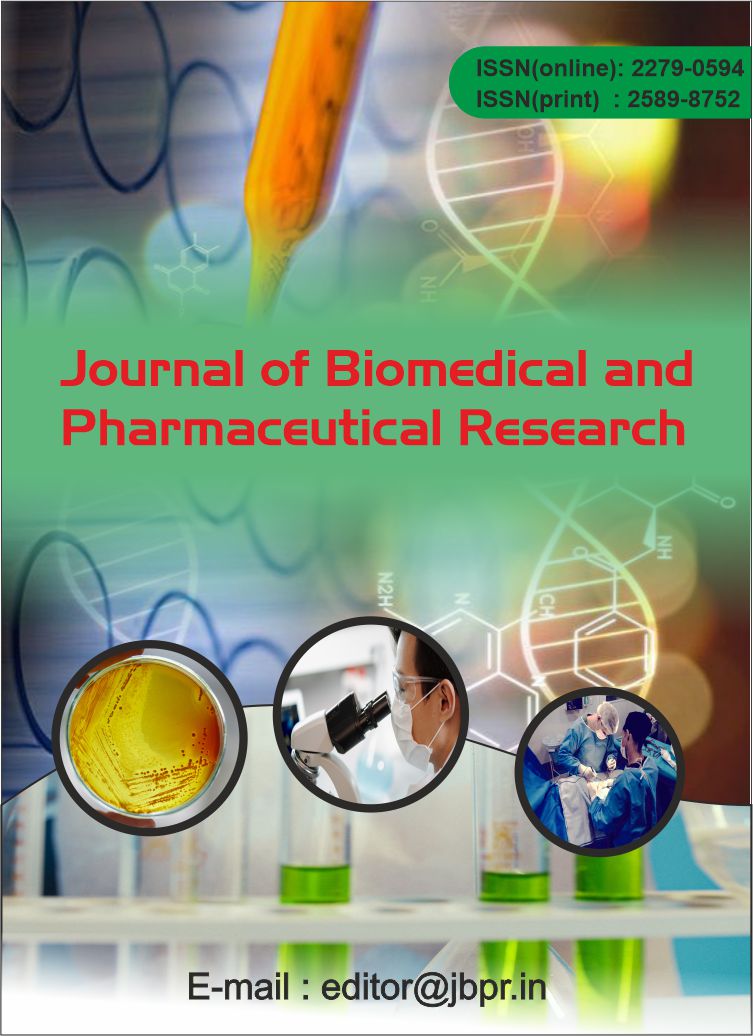To Examine the Clinical Features and Risk Factors Associated with Lens-Induced Glaucoma
Abstract
Background: Lens-induced glaucoma (LIG) is a secondary glaucoma resulting from complications related to the lens. It includes several distinct forms, such as phacomorphic, phacolytic, traumatic, pseudoexfoliation, lens particle, and phaco-anaphylactic glaucoma. Understanding the clinical features and risk factors associated with LIG is crucial for early diagnosis and effective management. Regular eye examinations are crucial for early detection of lens-related issues and risk factors. Identifying and addressing conditions such as advanced cataracts or pseudoexfoliation syndrome can help prevent the development of LIG. Prompt surgical intervention for cataracts, management of traumatic injuries, and treatment of inflammatory conditions are essential in preventing or mitigating lens-induced glaucoma. Educating patients about the risks and symptoms of lens-induced glaucoma, especially those with known risk factors, can lead to earlier diagnosis and treatment. Employing modern surgical techniques and ensuring thorough postoperative care can minimize the risk of complications such as lens particle glaucoma.
Aim: This study aims to evaluate the clinical features and risk factors associated with various types of lens-induced glaucoma, providing insights into their diagnosis, management, and prevention. Material and Method: This observational cohort study aimed at examining the clinical features and risk factors associated with lens-induced glaucoma was conducted in the Department of Ophthalmology. It involved 80 cases of secondary glaucoma across multiple hospital settings and specialized ophthalmology clinics to ensure a diverse patient population. Each patient underwent a comprehensive evaluation, which included detailed medical history covering personal details (name, age/gender, and address), presenting complaints, and past medical history, including systemic conditions such as diabetes mellitus, hypertension, cardiovascular disease, asthma, use of eye or oral steroids, and ocular diseases like ocular sclerosis. Patients meeting the inclusion criteria provided informed consent.
Results: The result provides a distribution of visual acuity levels among patients, showing a range from near-normal vision to no light perception. Result shows a variety of findings related to the optic disc and retinal pathology, with high percentages of patients exhibiting changes associated with glaucoma, peripapillary atrophy, and disc hemorrhages. Other conditions like hypertensive retinopathy and proliferative diabetic retinopathy are less prevalent. The result shows that the most common types of lens-induced glaucoma are phacomorphic (53.3%) and phacolytic glaucoma (33.3%), with traumatic and pseudoexfoliation glaucoma being less common. No cases of lens particle or phaco-anaphylactic glaucoma were observed in this group.
Conclusion: Lens-induced glaucoma encompasses a range of conditions, each with specific clinical features and risk factors. Understanding these aspects is vital for effective management and prevention. By focusing on early detection, timely intervention, and addressing risk factors, healthcare providers can significantly improve outcomes for patients with lens-induced glaucoma. Continued research and advancements in surgical techniques will further enhance our ability to manage and prevent this complex condition. Further research is needed to refine treatment strategies and enhance our understanding of LIG.
![]() Journal of Biomedical and Pharmaceutical Research by Articles is licensed under a Creative Commons Attribution 4.0 International License.
Journal of Biomedical and Pharmaceutical Research by Articles is licensed under a Creative Commons Attribution 4.0 International License.





